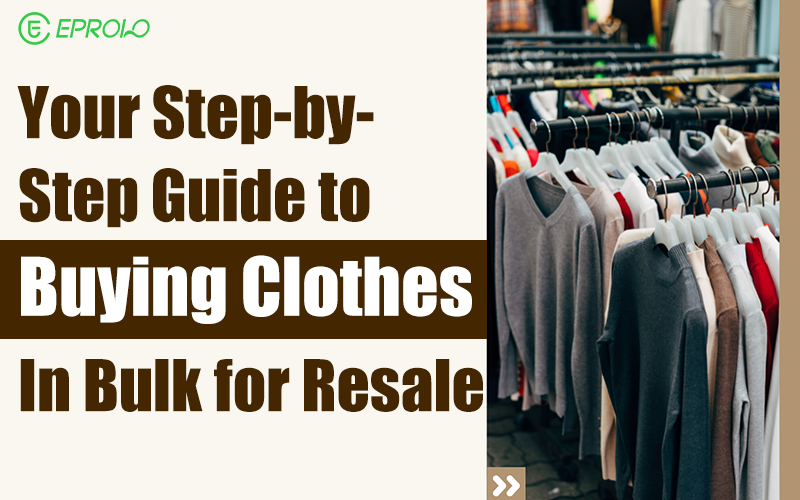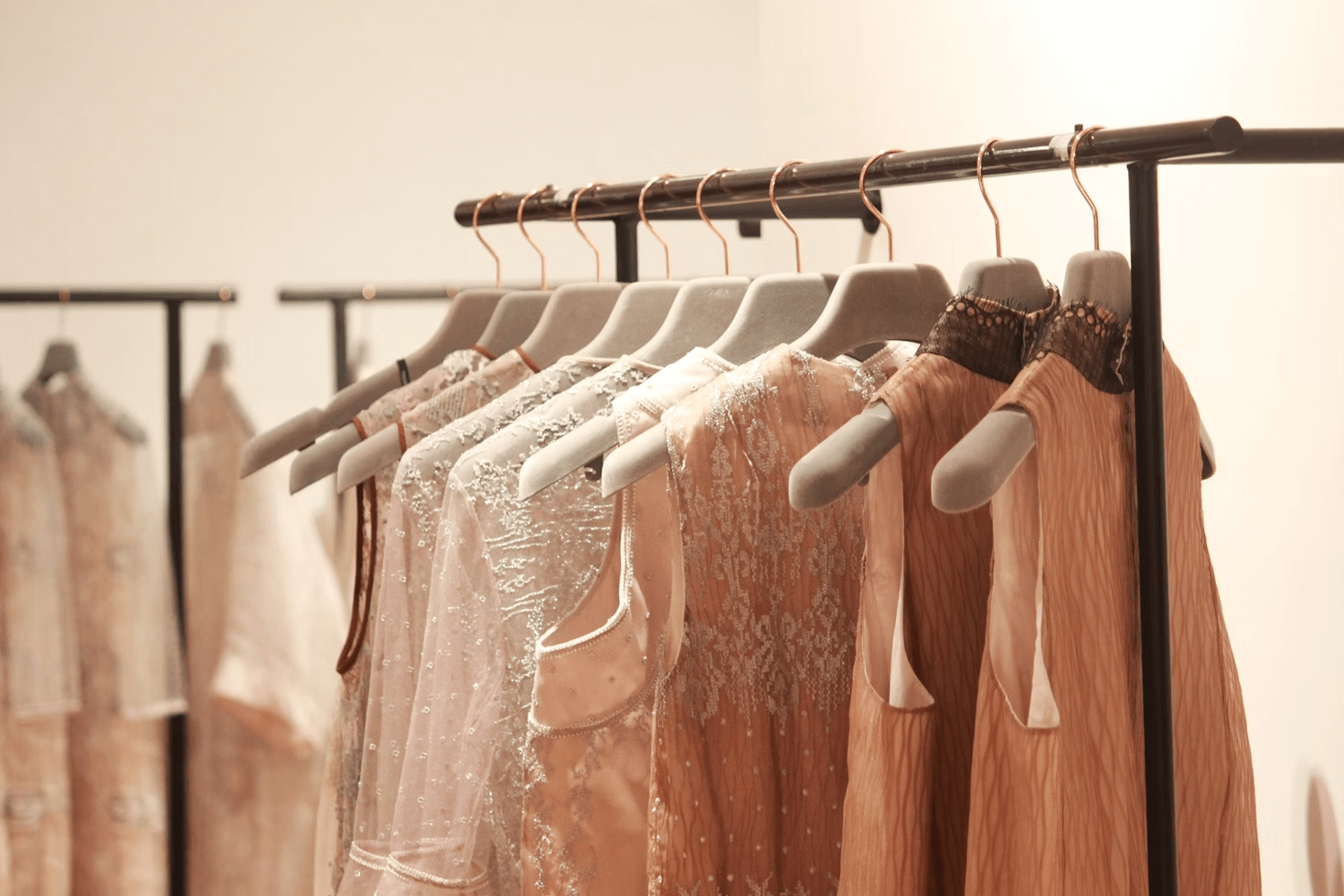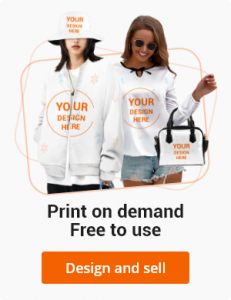
Page overview:
Why Reselling Bulk Clothing Is a Smart Move
Bulk vs. Retail: What’s the Difference?
Types of Bulk Clothing You Can Buy
A 9-Step Guide to Buying Bulk Clothes
Challenges When Buying Bulk Clothes for Resale
Bulk Buying vs. Dropshipping: The Key Differences
Why Reselling Bulk Clothing Is a Smart Move
Buying clothes in bulk for resale works because you’re serving as a bridge here: one side are suppliers who need to sell off inventory fast, and on the other are customers looking for quality clothes at great prices.
The idea is simple: buy wholesale, sell retail, and keep the profit.
And for product, the clothing world is perfect for resellers. People buy clothes for all kinds of reasons and often follow current trends—meaning demand stays steady. Plus, many suppliers regularly clear out extra stock, seasonal items, or returns at a discount, which is a good chance to stock up on products at a lower price.
To succeed, you need to find the right suppliers, know your customers, and control your costs. Some people build huge businesses over time, but it takes patience, learning from mistakes, and slowly growing your operation.
Bulk vs. Retail: What’s the Difference?
Given the booming resale market, it’s crucial to understand the fundamental difference between buying for personal use and buying to sell. This understanding is essential for anyone entering the resale market.
Retail purchasing means buying single items at full price from stores. When you buy a shirt for $20 at a department store, you’re paying the final consumer price, leaving no room for profit if you try to resell it.
Bulk clothing purchasing involves buying directly from wholesalers, liquidators, or manufacturers in larger quantities. Instead of one shirt for $20, you might buy 25 shirts for $5 each from a wholesale supplier. This big price difference creates your profit margin when you sell each item individually.
Here’s why bulk purchasing works:
- Volume discounts: Suppliers offer lower prices per item when you buy more.
- Direct sourcing: You avoid retail markups by buying closer to the original source.
- Inventory commitment: You take on the risk of holding stock in exchange for better prices.
Types of Bulk Clothing You Can Buy
Now that you know why bulk buying is essential, let’s look at the different kinds of bulk clothing you can get your hands on. Each type comes with its own set of advantages and things to keep in mind:
| Bulk Clothing Type | Description | Advantages | Considerations |
|---|---|---|---|
| Wholesale New Clothing | Brand new items from manufacturers or official distributors. | Consistent quality and sizing. | Lower profit margins possible (competing with retailers). |
| Overstock Items | New merchandise stores couldn’t sell through regular channels. | Often 50-70% below retail, good profit potential. | Generally, consistent quality. |
| Liquidation Lots | Inventory from store closings or warehouse clearances. | Prices can be very low. | Quality and sizing can be highly inconsistent. |
| Customer Returns | Items returned to retailers that can’t be sold as new. | Many are in excellent condition with minor issues. | Requires checking condition of each item. |
| Seasonal Clearance | End-of-season items stores need to clear out. | Can offer strong profits. | Requires storage until the appropriate selling season. |

A 9-Step Guide to Buying Bulk Clothes
So how do you actually start buying? Look at this step by step guide for bulk clothing resale:
Step 1: Research Your Market
Start by figuring out what sells well in your area or on your chosen online platform. Check completed listings on eBay, look at popular items on Poshmark, and note which brands and styles are in demand.
Step 2: Set Your Budget
Decide how much you can invest to start. Begin small, with $200-$500, to test the waters and learn the ropes. Don’t forget to include costs for storage, shipping, and platform fees.
Step 3: Find Reliable Clothing Vendors
Once you have a budget and an idea of what to look for, it’s time to find where you’ll get your bulk clothes. Look for wholesale suppliers through:
- Local liquidation companies.
- Trade shows and industry events.
- Manufacturer websites that have wholesale sections.
Step 4: Evaluate Vendors
And you also have to ensure they’re reliable, before you make big purchases:
- Order samples to check quality.
- Read reviews to verify the vendor’s reputation.
- Understand their return policy and minimum order quantities.
- Confirm shipping costs and delivery times.
Step 5: Calculate Potential Profits
Before you buy anything, you need to know if it’s going to make you money. This step is critical for smart buying. Estimate:
- Your total cost per item (including shipping and fees).
- The estimated selling price based on your market research.
- Platform fees and shipping costs to your customers.
- Your net profit margin.
Step 6: Start Small
With your calculations done, it’s time to make your first move. Make your first purchase small enough that you can afford to lose the money if things don’t work out. This lets you learn without major financial risk.
Step 7: Set Up Your Storage and Systems
Before your first order even arrives, get organized. This will save you headaches later. Organize your inventory tracking system before your items arrive. You’ll need to keep tabs on:
- Item descriptions and conditions.
- Purchase costs.
- Selling prices.
- Profit margins.
- Where you store everything.
Step 8: List and Sell
You’ve done your research, bought your inventory, and set up your systems. Now for the exciting part! Take good photos, write accurate descriptions, and list items on your chosen platforms. Price them competitively based on your market research.
Step 9: Analyze and Adjust
The learning process continues once you start selling. Keep track of what sells fast and what doesn’t. Use this information to make smarter buying decisions for your next bulk orders. This continuous feedback loop is key to long-term success.
Challenges When Buying Bulk Clothes for Resale
While the steps above make it seem straightforward, bulk clothing resale comes with its own set of hurdles. Understanding these challenges upfront can help you prepare and avoid common pitfalls:
- Inventory Risk: You’re putting money into stock that might not sell as fast as you expect. Seasonal items, wrong sizes, or unpopular styles can tie up your cash.
- Quality Inconsistency: Bulk lots, especially liquidation items, might include damaged or lower-quality pieces that cut into your profits.
- Storage Requirements: Holding inventory needs enough storage space, which costs money and might be tricky in smaller homes.
- Market Competition: Popular platforms have many sellers, making it harder to stand out and potentially lowering prices.
- Seasonal Fluctuations: Clothing sales change a lot by season, so you need careful planning and cash flow management.
- Time Investment: Processing, photographing, listing, and shipping individual items takes a lot of time, especially as you grow.
- Platform Fees: Selling platforms usually charge 10-15% in fees, which reduces your profit margins.
Another Option: Dropshipping
If the challenges of bulk buying, especially the inventory risk and storage needs, sound daunting, there’s an alternative business model worth considering: dropshipping.
With dropshipping, you list products for sale without actually holding any inventory. When a customer buys something, you send the order to your supplier, who then ships it directly to the customer. You make money from the difference between what the customer pays and what you pay the supplier.
Dropshipping Advantages:
- No upfront investment in inventory.
- No storage space needed.
- Lower financial risk.
- Ability to test products without commitment.
- Easier to offer a wide variety of products.
Dropshipping Disadvantages:
- Lower profit margins per item.
- Less control over product quality and shipping times.
- You depend on your supplier’s reliability.
- More competition because it’s easy for anyone to start.
Bulk Buying vs. Dropshipping: The Key Differences
So which model is right for you? Here are the main differences between these two approaches:
- Capital Needed:
- Bulk buying: Requires a high upfront investment in inventory.
- Dropshipping: Low startup costs; you only pay when you make a sale.
- Profit Margins:
- Bulk buying: Higher margins because of wholesale pricing.
- Dropshipping: Lower margins, but also lower risk.
- Control:
- Bulk buying: Full control over inventory quality and shipping.
- Dropshipping: Limited control; you rely on the vendor’s performance.
- Scalability:
- Bulk buying: Needs more storage and capital to grow.
- Dropshipping: Easier to scale without extra infrastructure.
- Risk:
- Bulk buying: Higher risk of unsold inventory.
- Dropshipping: Lower financial risk but higher operational risk (supplier issues, etc.).
How EPROLO Can Help with Dropshipping
If dropshipping sounds like a better fit for you, platforms exist to make it easier. EPROLO is one such dropshipping platform that connects sellers with a wide range of dropshipping products, particularly for clothing and fashion items. Here’s how it can support your dropshipping business:
- Product Sourcing: EPROLO gives you access to many fashion items, so you can find products that fit your market research without minimum order quantities.
- Quality Control: The platform includes supplier vetting and quality checks, which helps reduce the chance of sending poor-quality items to customers.
- Automated Order Processing: When you get an order, EPROLO can automatically send it to the supplier and handle fulfillment, cutting down on manual work.
- Branding Services: They offer custom packaging and branding options, helping you keep a professional image with your customers.
- Shipping Options: You get multiple shipping methods, letting you balance cost and delivery speed based on what your customers expect.
- Integration: EPROLO works with popular e-commerce platforms like Shopify, making it easier to manage your online store.
While platforms like EPROLO can simplify dropshipping, you still need to do market research, price competitively, and provide excellent customer service to succeed.

Choosing Your Resale Strategy
Both bulk clothing purchasing and dropshipping can be profitable ways to resell clothes. They just need different strategies and work best in different situations.
Bulk purchasing is a good fit if you:
- Have sufficient startup capital.
- Can dedicate space for storage.
- Want higher profit margins.
- Prefer more control over your inventory.
Dropshipping might be better if you:
- Have limited startup capital.
- Want to test different products quickly.
- Prefer lower financial risk.
- Don’t have storage space.
No matter which path you pick, success comes down to understanding your market, finding dependable clothing vendors, and giving great customer service. Start small, learn from what you do, and slowly grow as you become an expert in the clothing resale market.
The clothing resale market truly offers opportunities, but like any business, it demands dedication, continuous learning, and patience to build lasting profits. Which approach sounds more like you?







